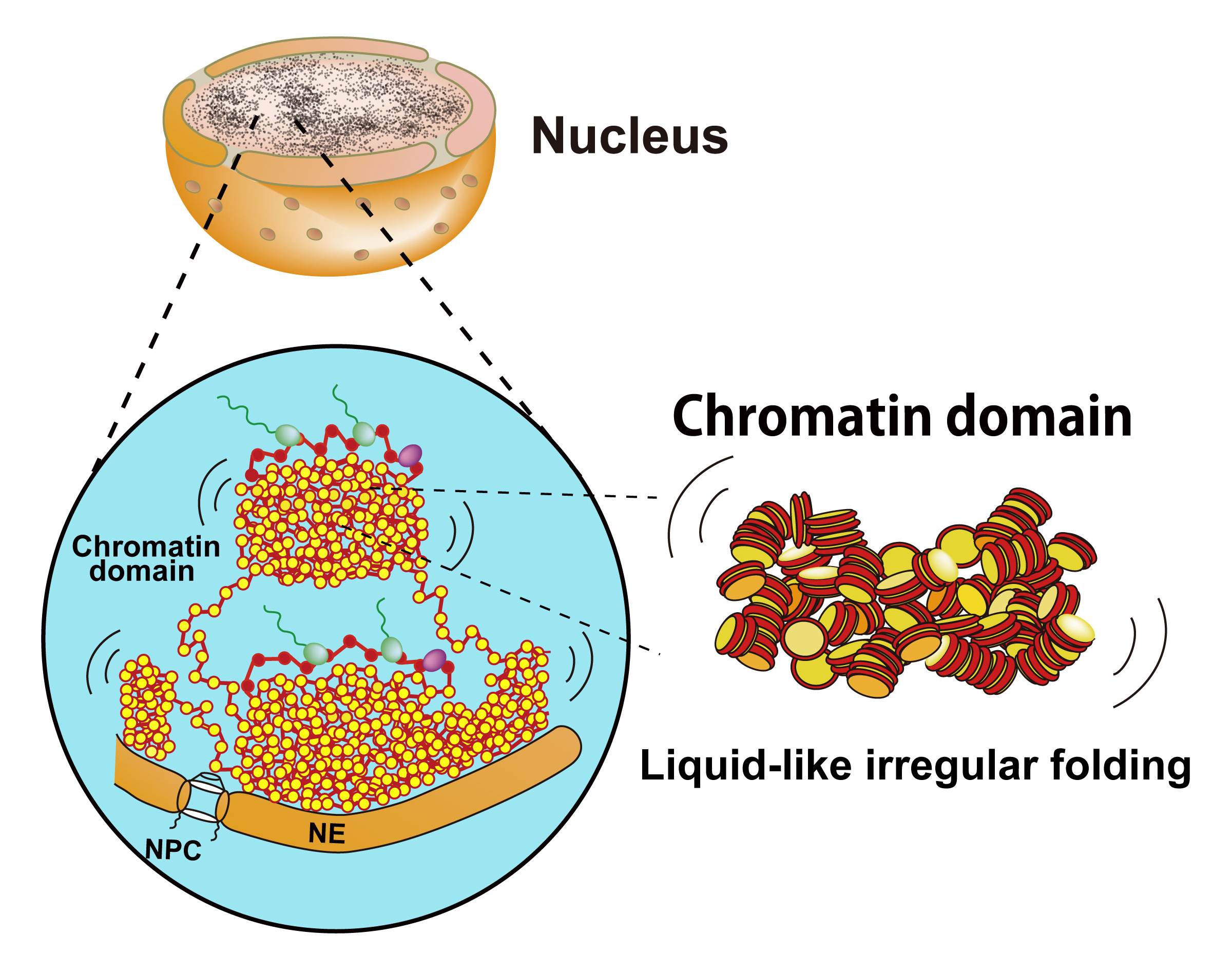Liquid-like behavior of chromatin
Biological Macromolecules Laboratory / Maeshima Group
Liquid-like behavior of chromatin
Kazuhiro Maeshima, Satoru Ide, Kayo Hibino, and Masaki Sasai.
Current Opinion in Genetics & Development, 2016, 37: 37-45. DOI:10.1016/j.gde.2015.11.006
Eukaryotic chromatin is a negatively charged long polymer composed of genomic DNA, histones, and various proteins. The charged property causes the chromatin structure to be dynamically changed. These dynamic changes are critical for genome functions such as gene expression because they directly govern the degree of DNA accessibility. Although the chromatin structure is not yet fully understood, currently increasing evidence suggests that chromatin has a dynamic liquid-like structure based on the 10-nm fiber but not the 30-nm fiber. This liquid-like property can drive the process of ‘scanning and targeting genomic DNA,’ which contributes to various genome functions including gene expression and DNA replication, repair, and recombination. Here, we discuss the liquid-like behavior of chromatin and its physical and biological relevance.

Chromatin consists of irregularly folded 10-nm fibers and forms numerous chromatin domains (e.g., topologically associating domains). The liquid-like movement of chromatin should bring about fluctuation of the chromatin domain. NPC, nuclear pore complex; NE, nuclear envelope.















